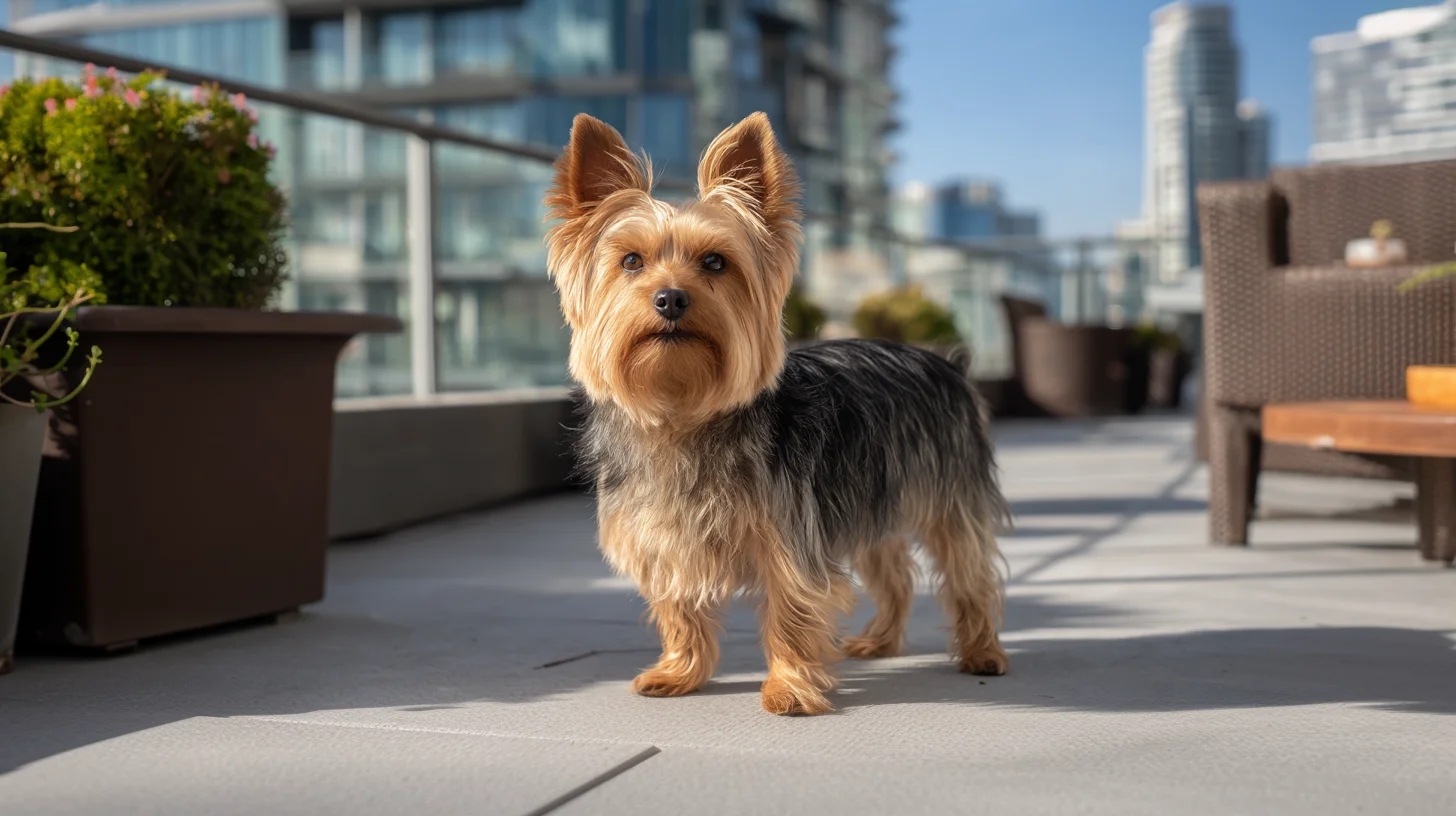
Silky Terrier
Breed Facts
Height
9-10 inches
Weight
8-10 pounds
Lifespan
13-15 years
Key Traits
Overview
Confident, spirited companions with flowing silky coats and big personalities in small packages. These lively, affectionate dogs blend fearless energy with charming devotion—perfect for individuals and families seeking a glamorous, playful friend who loves to explore, entertain, and stay close to their people.
Temperament & Personality
Silky Terriers are spirited, confident little dogs – often described as "big dogs in small bodies." They are lively, alert and highly intelligent, with a feisty terrier spirit. Silkies tend to be affectionate and playful with their families; they usually greet people eagerly and are good with older children. At the same time they can be independent and strong-willed during training, and may bark to alert you to any new activity. Their small size belies a bold nature; they make excellent watchdogs despite their dainty appearance.
Care, Living Environment, & Grooming
Silky Terriers need daily exercise – roughly 30–60 minutes of activity each day. They enjoy walks, fetch and agility challenges, which also help use their sharp mind. Silkies adapt well to both city and country living thanks to their small size. Apartment life can work if you take them out for regular walks and playtime. Keep them on leash or fenced outdoors, though – they have a high prey drive and will chase squirrels or rabbits.
- Daily/Weekly: Brush the silky coat thoroughly to prevent tangles and remove debris. Clean ears and teeth regularly.
- Monthly: Plan a bath and a trim about every 4–6 weeks, depending on coat length. Check nails and clip as needed.
- As needed: Maintain eye and skin hygiene, and inspect paws/ears for irritation. Silkies shed very little, but daily brushing is needed for their long fine hair.
Feed a high-quality diet and measure portions. Silkies do best on two meals per day. They have hearty appetites and can gain weight if overfed, so strict portion control is wise.
Training & Socialization
Silkies are clever and eager to learn, but can also be a bit stubborn. They respond best to firm, consistent training using positive-reward techniques. Start training early, focusing on basic obedience and leash manners. Early socialization is important: introduce your Silky to many people, places and other dogs when young. This helps curb any natural wariness of strangers and prevents small-animal chasing tendencies. Consistency is key: a calm, patient owner who uses treats and praise will have success with this breed.
Health Considerations
Silkies are generally healthy with a lifespan around 13–15 years. Keep an eye on these hereditary issues:
- Luxating patella: Weak kneecaps that can slip out of place.
- Legg–Calvé–Perthes disease: Hip joint degeneration causing lameness.
- Eye disorders: Progressive retinal atrophy, lens luxation or cataracts can cause vision loss.
- Dental disease: Small breeds often have gum disease, so brush teeth regularly.
- Allergies: Skin and food sensitivities can occur; regular vet checks help catch them.
Regular vet exams (including eye exams and hip checks) are recommended. A balanced diet and dental care will help prevent common problems.
Cost of Ownership
Owning a Silky Terrier averages about $1,800/year. Major costs include: food ($300/year), routine vet care ($400 for exams/vaccines), and pet insurance ($500/year). Grooming is a larger expense: professional baths/trims every 1–2 months can run $200–400/year. First-year costs are higher ($2,500+) due to puppy supplies, initial vaccinations and spay/neuter fees.
Pros and Cons
Pros
- Affectionate and eager companion
- Alert, excellent watchdog for its size
- Intelligent and often trainable
- Small size suits city or apartment living
Cons
- Heavy grooming needs (daily brushing)
- Tendency to bark or be vocal
- Can be stubborn or independent
- Strong prey drive; may chase small pets
Fun Facts
- Silky Terriers were bred in Australia by crossing Yorkshire Terriers with Australian Terriers in the early 1900s.
- They were one of the first dog breeds recognized internationally from Australia.
- Their coat grows continuously like human hair, so they require regular trims but shed very little.
Frequently Asked Questions
Do Silky Terriers shed a lot?
No – Silkies have a fine, human-like coat and shed very little. Regular brushing prevents tangles, and most loose hair stays in the brush.
Are Silky Terriers good apartment dogs?
Yes. Their small size makes them well-suited to apartments as long as they get daily walks and playtime. They enjoy being close to their owners indoors.
How much exercise does a Silky Terrier need?
About 30–60 minutes of activity per day is usually enough. This can include walks, play sessions or agility practice. Mental stimulation (training, puzzle toys) also keeps them happy.
Can first-time owners handle a Silky Terrier?
Silky Terriers can be good for first-time owners if you're ready for consistent care. They are intelligent and often eager to please, making them trainable. Just be prepared for daily grooming and to provide firm, patient training.
References
Personality Profile
Find your perfect puppy pair!
Take our quick personality quiz to find the breeds that match your personality.
Start Quiz NowKey Traits
Temperament
affectionate
Reserved
Cuddly
energy Level
Calm Companion
High-Energy Dynamo
Social Behavior
good With Children
Best with Adults/Older Kids
Kid-Friendly
barking Level
Quiet-Natured
Talkative
Care & Maintenance
shedding Level
Light Shedder
Heavy Shedder
exercise Needs
Short Walks Enough
Needs Daily Workouts
Learning & Cognition
trainability
Independent Thinker
Eager Learner
mental Stimulation Needs
Content Relaxer
Needs Challenges
Breed Facts
Height
9-10 inches
Weight
8-10 pounds
Lifespan
13-15 years
Key Traits
You Might Also Like
Find Your Perfect Puppy Pair
Take our scientifically-backed personality quiz to discover which dog breeds align with your personality.
Start the Quiz


